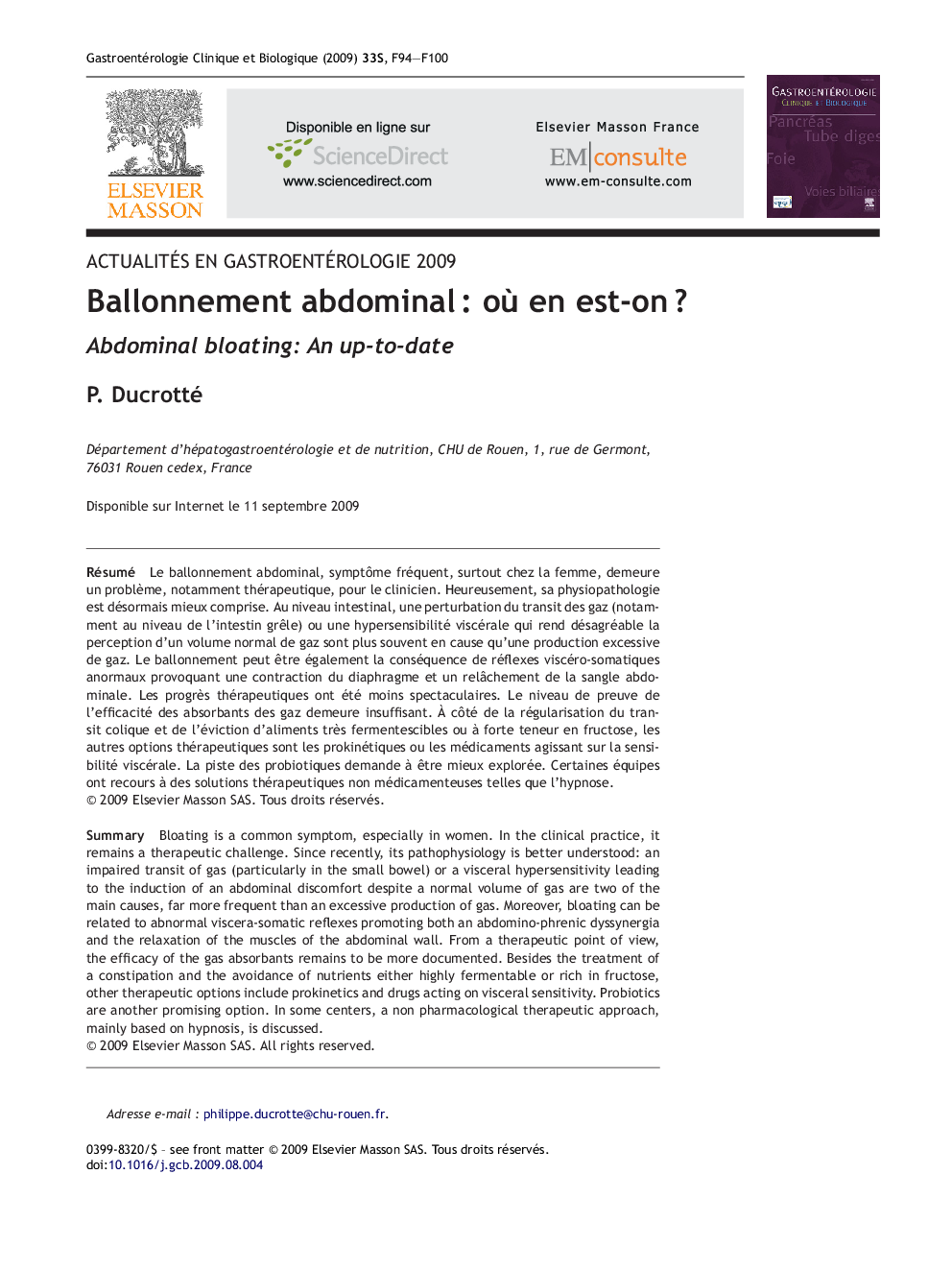| Article ID | Journal | Published Year | Pages | File Type |
|---|---|---|---|---|
| 3290397 | Gastroentérologie Clinique et Biologique | 2009 | 7 Pages |
RésuméLe ballonnement abdominal, symptôme fréquent, surtout chez la femme, demeure un problème, notamment thérapeutique, pour le clinicien. Heureusement, sa physiopathologie est désormais mieux comprise. Au niveau intestinal, une perturbation du transit des gaz (notamment au niveau de l’intestin grêle) ou une hypersensibilité viscérale qui rend désagréable la perception d’un volume normal de gaz sont plus souvent en cause qu’une production excessive de gaz. Le ballonnement peut être également la conséquence de réflexes viscéro-somatiques anormaux provoquant une contraction du diaphragme et un relâchement de la sangle abdominale. Les progrès thérapeutiques ont été moins spectaculaires. Le niveau de preuve de l’efficacité des absorbants des gaz demeure insuffisant. À côté de la régularisation du transit colique et de l’éviction d’aliments très fermentescibles ou à forte teneur en fructose, les autres options thérapeutiques sont les prokinétiques ou les médicaments agissant sur la sensibilité viscérale. La piste des probiotiques demande à être mieux explorée. Certaines équipes ont recours à des solutions thérapeutiques non médicamenteuses telles que l’hypnose.
SummaryBloating is a common symptom, especially in women. In the clinical practice, it remains a therapeutic challenge. Since recently, its pathophysiology is better understood: an impaired transit of gas (particularly in the small bowel) or a visceral hypersensitivity leading to the induction of an abdominal discomfort despite a normal volume of gas are two of the main causes, far more frequent than an excessive production of gas. Moreover, bloating can be related to abnormal viscera-somatic reflexes promoting both an abdomino-phrenic dyssynergia and the relaxation of the muscles of the abdominal wall. From a therapeutic point of view, the efficacy of the gas absorbants remains to be more documented. Besides the treatment of a constipation and the avoidance of nutrients either highly fermentable or rich in fructose, other therapeutic options include prokinetics and drugs acting on visceral sensitivity. Probiotics are another promising option. In some centers, a non pharmacological therapeutic approach, mainly based on hypnosis, is discussed.
